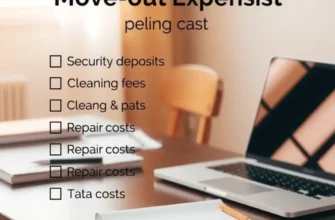Renting can be a daunting experience, especially for young professionals, first-time renters, students, couples, and families striving to find a budget-friendly home in the U.S. Amid fluctuations in the housing market and rising living costs, understanding rent control is essential for those looking to secure financial clarity. Rent control laws exist to mitigate the impact of soaring rents, ensuring that tenants have access to reasonably priced housing options. This guide will delve into what rent control is, how it operates in different states, and the benefits it offers to renters. By understanding the nuances of rent control, you can make informed decisions about your housing choices, avoid unexpected costs, and maximize your rental experience. Whether you’re searching for your first apartment, settling down with a partner, or raising a family, knowing your rights and protections as a tenant will empower you to advocate for your housing needs effectively.
What is Rent Control and Why Does it Matter?

Rent control can be defined as a series of laws designed to stabilize the rental market. These laws typically limit the amount landlords can increase rent and regulate eviction procedures. By providing a level of predictability in rental costs, rent control aims to protect tenants from sudden and excessive rent hikes.
Historically, rent control emerged as a response to housing shortages and rising living costs. Its primary purpose has always been to ensure housing remains affordable, particularly in urban areas where demand far outweighs supply. Implementing rent control policies can prevent displacement of low- and middle-income families, promoting more equitable and stable communities.
The importance of rent control is multifaceted. For tenants, predictable rent is not just a financial relief but also peace of mind. It allows families to budget more effectively, focusing resources on other essentials rather than worrying about unpredictable rent increases. Rent control serves as a safeguard against housing insecurity, reducing the stress of potential dislocation.
In cities with rapidly growing populations and limited housing stock, rent control can help balance market forces. This mechanism ensures that long-term residents are not priced out of their neighborhoods. However, it’s essential to know that rent control policies vary significantly by location. Knowing the specific regulations in your area is crucial to understanding your rights and responsibilities as a tenant.
Landlords often oppose rent control, arguing it discourages investment in property maintenance and new housing developments. There’s a debate on whether such measures decrease the incentive to upgrade existing housing or build new units. Nonetheless, supporters point out that well-structured rent control can coexist with property development, as seen in several successful models worldwide.
Understanding the specific nuances of rent control in your locality involves more than just knowing the rent cap. Other factors include how often rent can be increased and the legal process for eviction. Renters should seek clarity on these details to better navigate their housing options. Exploring resources like fair housing laws can provide additional insight into rights and protections available.
For tenants, especially those in economically vulnerable situations, rent control can be the linchpin holding their household together. It’s not just about shielding renters from economic fluctuations but also contributing to the broader goal of maintaining diverse and vibrant communities. Rent control, when implemented thoughtfully, ensures that cities remain accessible to all income levels, fostering social cohesion and economic stability.
How to Navigate Rent Control Laws in Your Area

Rent control laws are a critical component of housing policy across the United States, offering protections that can significantly impact renters’ financial stability. To effectively navigate these regulations, it’s essential to focus on understanding the local context and variations in laws between different states and cities.
Start by identifying whether the area you reside in has rent control laws, as not all municipalities implement these regulations. For instance, cities like New York, Los Angeles, and San Francisco are well-known for their rent control policies that limit how much landlords can increase rents annually. In contrast, many cities in Texas, due to state preemptions, do not allow for rent control.
Once you’ve ascertained that rent control exists in your area, dig into the specifics. States like California, with its Costa-Hawkins Rental Housing Act, have specific guidelines on which units qualify for rent control. Similarly, New York’s rent stabilization laws protect apartments constructed before a specific date and under certain conditions. Check state and city government websites or local housing departments for the most accurate and detailed information on current rent laws.
Consider proactively joining or reaching out to local tenant unions or advocacy groups that focus on renters’ rights. These organizations often have resources and offer workshops to educate tenants on their rights under local rent control laws. They can provide invaluable support if disputes with landlords arise.
For tenants affected by rent increases, understanding rent control’s annual adjustment caps is vital. Areas with rent control usually publish annual permissible rent increase rates. For instance, in Los Angeles, increases for rent-controlled units are typically tied to inflation calculations. By staying informed about these limits, you can ensure your landlord complies, potentially saving significant amounts over time.
Furthermore, renters should be aware of related laws that accompany rent control, such as evictions. Cities often have rules about the just causes needed for eviction in rent-controlled units, which can be a different set of protections from non-rent-controlled areas.
Leveraging rent control effectively also involves strategic negotiation. If you’re negotiating a new lease, understanding the intricacies of local laws can provide leverage. Always maintain open communication with landlords, emphasizing mutual benefits of stable, affordable rent.
Finally, it’s beneficial to explore the financial implications of rent control on future housing plans. Evaluate how long-term rent stability under these laws might affect your financial goals, such as saving for home ownership or other investments. For more insights on managing renter-related stress, consider exploring resources like stress management strategies for renters.
In conclusion, navigating rent control laws requires a combination of understanding local statutes, proactive community engagement, and strategic personal finance planning. With these tools, renters can leverage rent control policies to ensure a more secure and affordable living situation.
Final words
Understanding rent control is not just for policy enthusiasts; it directly affects your financial health as a renter. Awareness of these regulations equips you with the knowledge to secure more affordable housing, especially in high-demand areas where rental prices can climb rapidly. Whether you’re just starting your rental journey or looking to find the best deal in a competitive market, being informed about your local rent control laws is essential. As you engage with the rental market, remember that you’re not just a tenant but an advocate for your housing rights. Equip yourself with the knowledge to voice your concerns and to negotiate confidently. The power of rent control could be the difference in your ability to enjoy a stable and comfortable home.









